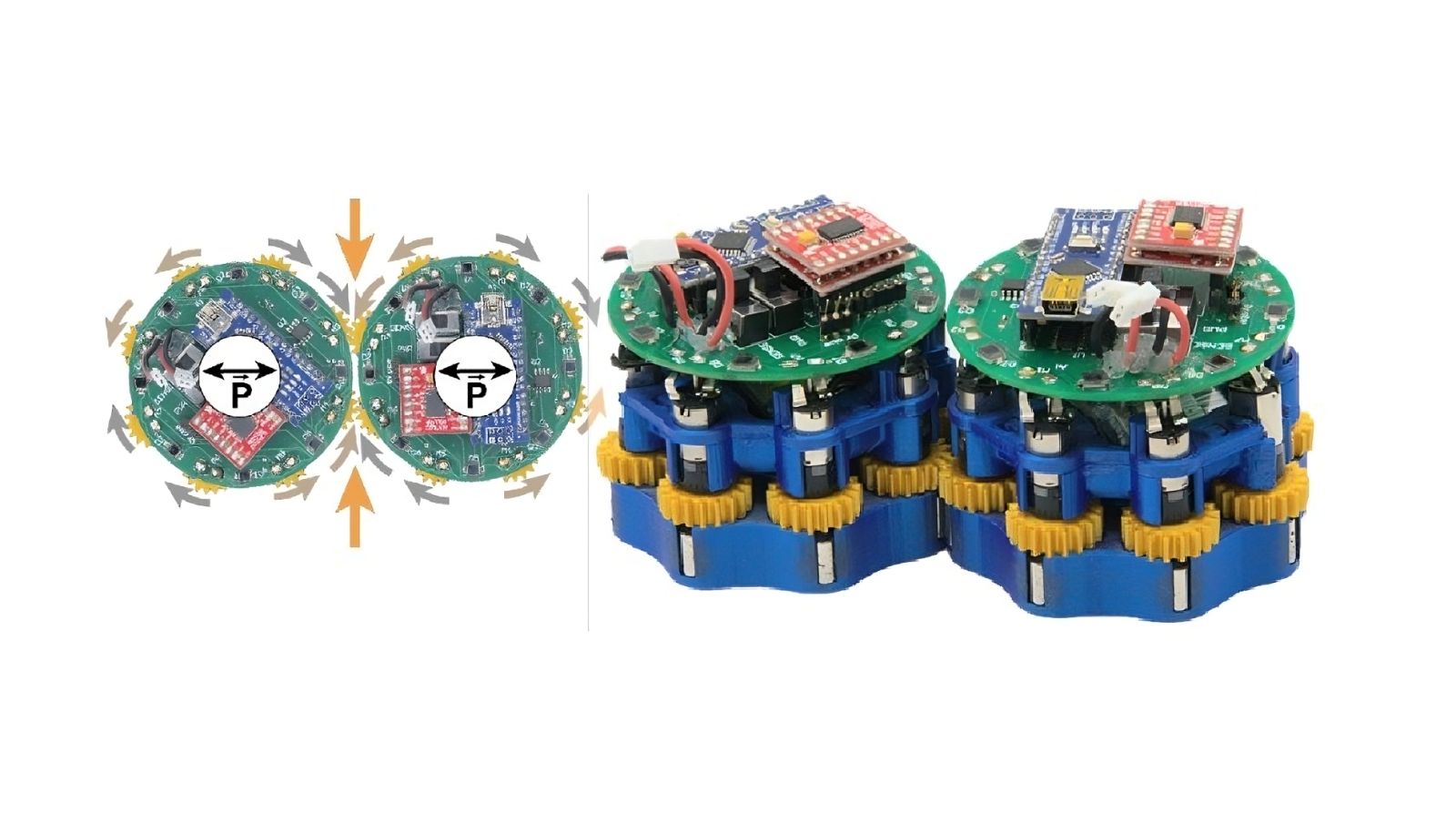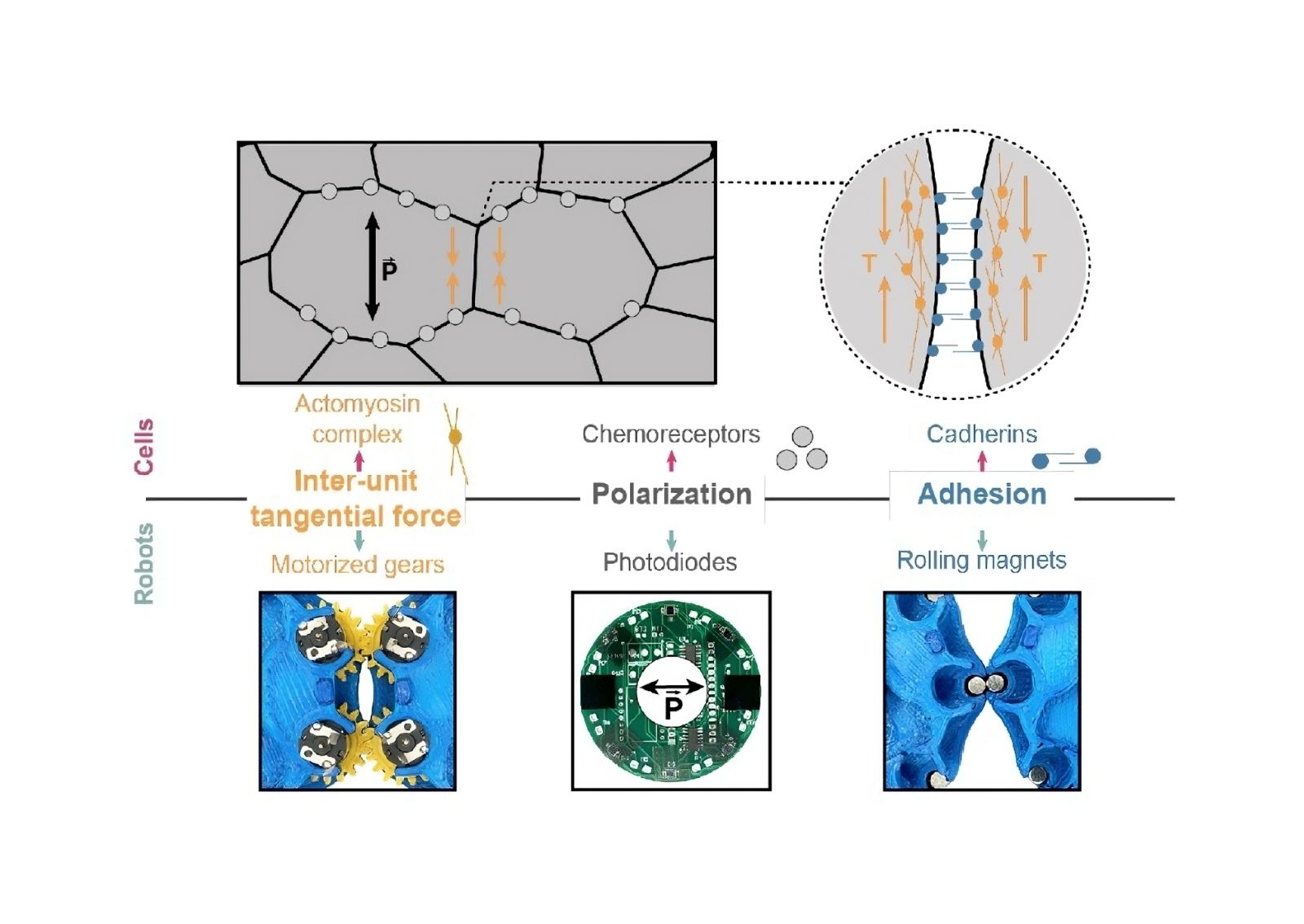Follow us on Google News (click on ☆)

This innovation paves the way for potential applications in various fields, ranging from robotics to active matter physics. By replicating the mechanisms of fluidity and solidity observed in embryos, the researchers have successfully designed a robotic system capable of self-organizing and dynamically adapting.
Biological inspiration: from embryos to robots
The researchers drew inspiration from embryonic tissues, considered natural intelligent materials. These tissues can transition from a fluid to a solid state, allowing cells to reorganize and form structures.
This phenomenon, called rigidity transition, is essential for organ development. Scientists have identified three key processes: active forces between cells, biochemical signaling, and cell adhesion. These mechanisms have been transposed into the world of robotics to create a collective capable of behaving similarly.
Each robot, shaped like a hockey puck, is equipped with eight motorized gears and rotating magnets. These elements allow the units to move relative to each other while maintaining solid cohesion. Polarized light sensors guide their movements, thus replicating the coordination observed in embryonic cells.
A robotic collective with adjustable properties
The robot collective can transition from a rigid to a fluid state by modulating the forces between the units. This flexibility is made possible by controlled fluctuations in the signals sent to the robots, enabling rapid and efficient reorganization.
The researchers also discovered that these fluctuations reduce energy consumption, a major advantage for practical applications. By adjusting the parameters of polarized light, they can direct the collective to form specific structures without individual reprogramming.

Ultimately, this technology could be miniaturized and extended to thousands of units, paving the way for robotic materials capable of adapting to different environments. These systems could be used to manipulate objects, support heavy loads, or even self-repair.
To go further: What is a rigidity transition?
The rigidity transition is a physical phenomenon where a material transitions from a solid to a fluid state, or vice versa, under the effect of internal or external forces. This concept is essential for understanding how certain systems, such as embryonic tissues or granular materials, can alternate between rigidity and fluidity.
In living tissues, this transition allows cells to reorganize spatially. For example, during embryonic development, cells can temporarily "melt" to move and form elaborate structures, such as organs, before solidifying again. This process is made possible by active forces generated by the cells themselves.
In physics, this phenomenon is often studied in systems like glasses or granular media. These materials can behave like solids under certain conditions but become fluid when subjected to specific stresses, such as vibrations or shear forces.
In the context of robots, the rigidity transition has been replicated by modulating the forces between the units. This allows the robot collective to transition from a rigid state, capable of supporting loads, to a fluid state, enabling rapid and flexible reorganization. This ability to dynamically adjust mechanical properties opens promising prospects for applications in robotics and materials science.